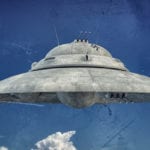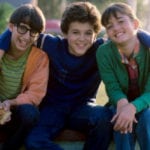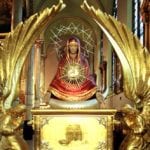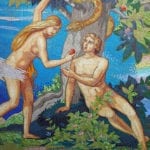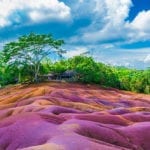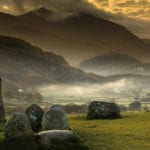 Mysteries
Mysteries  Mysteries
Mysteries  History
History 10 Surprising Stories About the Texas Rangers
 Humans
Humans 10 Philosophers Who Were Driven Mad by Their Own Theories
 Miscellaneous
Miscellaneous 10 Video-Game-Worthy Weapons and Armors from History
 Weird Stuff
Weird Stuff 10 Psychics Who Accurately Predicted Wartime Events
 The Arts
The Arts 10 Pieces of Art Inspired by a Broken Heart
 Health
Health 10 Science Fiction-Sounding New Medical Treatments
 History
History 10 Surprising Facts About the Father of Submarine Warfare
 Space
Space Ten Astonishing New Insights into Alien Worlds
 Weird Stuff
Weird Stuff 10 Bizarre Summer Solstice Rituals Still Practiced Today
 Mysteries
Mysteries Top 10 Haunting Facts About the Ghost Ship MV Alta
 History
History 10 Surprising Stories About the Texas Rangers
 Humans
Humans 10 Philosophers Who Were Driven Mad by Their Own Theories
Who's Behind Listverse?

Jamie Frater
Head Editor
Jamie founded Listverse due to an insatiable desire to share fascinating, obscure, and bizarre facts. He has been a guest speaker on numerous national radio and television stations and is a five time published author.
More About Us Miscellaneous
Miscellaneous 10 Video-Game-Worthy Weapons and Armors from History
 Weird Stuff
Weird Stuff 10 Psychics Who Accurately Predicted Wartime Events
 The Arts
The Arts 10 Pieces of Art Inspired by a Broken Heart
 Health
Health 10 Science Fiction-Sounding New Medical Treatments
 History
History 10 Surprising Facts About the Father of Submarine Warfare
 Space
Space Ten Astonishing New Insights into Alien Worlds
 Weird Stuff
Weird Stuff 10 Bizarre Summer Solstice Rituals Still Practiced Today
10 Spooky Recording Locations
Like movies and books, the music industry has a folklore all its own. Famous urban legends range from the belief that the song “Love Rollercoaster” contains the final screams of a murdered woman to the once-pervasive rumor that Paul McCartney died before the Beatles recorded Abbey Road.
While outside institutions, such as the FBI, have played their part in adding to the mystique of rock and roll, the musicians themselves have been the predominant movers and shakers. Some bands have added to music’s rebellious image by trashing hotel rooms or dying before age 30. Others have kept their origins intentionally vague so as to create a general air of mystery, while a majority just let their music do the talking.
A select few acts have generated speculation and supposition by either intentionally or unintentionally recording albums or live concerts in bizarre locations. From haunted castles to pine boxes, the following 10 recordings were produced in decidedly spooky locales.
10 Blood Sugar Sex Magik
Widely regarded as one of the best albums of the 1990s, Blood Sugar Sex Magik contains such classic tracks as “Under the Bridge” and “Give It Away.” While readers of Alternative Nation ranked Stadium Arcadium as the best album ever made by the Red Hot Chili Peppers, 1991’s Blood Sugar Sex Magik still has many supporters.
Thematically, Blood Sugar Sex Magik primarily focuses on drugs and sex, with the former issue being a major source of conflict within the band. However, a twinge of darkness is implicit in the album. The band noticeably spelled magic as “magik,” which seemingly references Aleister Crowley and his Thelema religion, which spells magic as “magick.” (It should also be noted that “sex magick” is one of the staples of Crowley’s occultism.)
In addition to the band’s flirtation with Crowley, Blood Sugar Sex Magik was also recorded at The Mansion, a palatial residence located in the Laurel Canyon section of Los Angeles. Owned by famous producer Rick Rubin, The Mansion was built in 1918 and was allegedly once owned by the famous magician and escape artist Harry Houdini.
Since the 1960s, The Mansion has been the home of several recording sessions. By the time the Red Hot Chili Peppers moved in to record Blood Sugar Sex Magik, The Mansion was well-known as a haunted house. Drummer Chad Smith was so convinced that the house was haunted that he refused to spend any nights there during the recording sessions.
Other band members agreed with Smith but decided to stay anyway. According to them, a group photo used in the album’s liner notes shows one of the house’s many ghostly residents in orb form above singer Anthony Kiedis’s head.
The Red Hot Chili Peppers returned to The Mansion to record Stadium Arcadium. Other bands, from LCD Soundsystem to Maroon 5, have likewise recorded albums there. Heavy metal act Slipknot, who recorded Vol. 3: (The Subliminal Verses) at The Mansion, claimed that they experienced several unnatural and inexplicable events at the location.
9 Sabbath, Bloody Sabbath
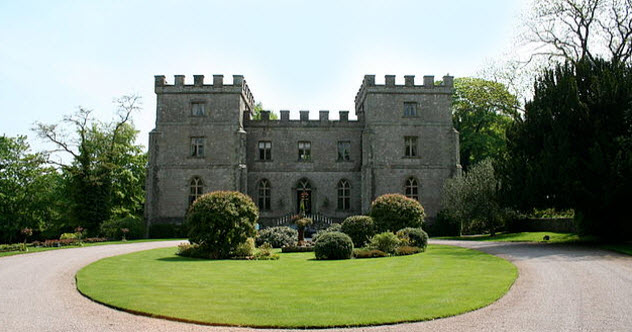
During their heyday, no band terrified listeners more than Black Sabbath. With their highly suggestive name and their doom-laden music, the Birmingham foursome certainly cultivated a dark image. In turn, the band, who were never serious practitioners of the black arts, appealed to the various occultists who were part of England’s swinging counterculture in the late 1960s and early 1970s. Therefore, the fact that Black Sabbath recorded an album in a reportedly haunted location is not too surprising.
In 1973, while recording what would become Sabbath, Bloody Sabbath, the band rented Clearwell Castle in Gloucestershire to get their creative juices flowing. To stimulate something, the band decorated the 17th-century castle—which had previously been used by acts such as Led Zeppelin, Mott the Hoople, and Bad Company—with dark, even satanic images.
Furthermore, the band rehearsed in the castle’s dungeon. According to guitarist Tony Iommi, while moving gear to the dungeon, he and another bandmate (sometimes said to be bassist Geezer Butler and other times singer Ozzy Osbourne) encountered a cloaked figure that disappeared once the bandmates chased after it. When the band told the owners of the castle what they had seen, the owners shrugged and merely informed the band that they had met the castle’s ghost.
8 “Bathory Erzsebet”
The story behind “Bathory Erzsebet,” a track on Sunn’s Black One album, may even be more hardcore than the band’s brand of slow doom metal itself. Known for dressing like druids and playing in Gothic cathedrals, Sunn (sometimes erroneously called “Sunn O” due to the band’s distinctive logo) is known for making music that relies heavily on distortion, feedback, and single-note rhythms.
The song “Bathory Erzsebet” is no different. The song’s title refers to the notorious countess and serial killer Elizabeth Bathory. (The song’s title also presents the Hungarian countess’ name in its original spelling and sequence.) To capture the countess’ morbidity, the band decided to do something novel.
Stephen O’Malley and Greg Anderson of Sunn called on the services of Malefic (the sole man responsible for the black metal act Xasthur) and locked the vocalist in a casket during the recording session. As you can hear in the video above, the pained, muffled screams of Malefic (real name Scott Connor) try to reproduce the horror and the agony of being buried alive.
7 Channeling Of Lady Elizabeth Bathory Feat. Kofi
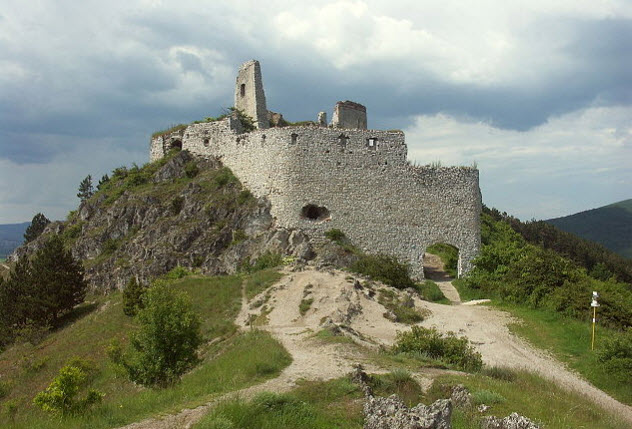
Sticking with the “Blood Countess,” the Slovak jam band of Stefanik, Perny, & Kollar decided to record a live album dedicated to their country’s most famous native. Released in July 2010, Channeling of Lady Elizabeth Bathory feat. Kofi was recorded at Visnove, a village within sight of Cachtice Castle.
In 1611, Bathory was accused by the Hungarian crown of torturing, mutilating, and killing some 600 women. Infamously, the court also spread the rumor that the countess had committed these atrocities because she believed that bathing in the blood of virgins kept her from aging. Whether true or not, the crimes of Elizabeth Bathory mostly occurred within the walls of Cachtice Castle.
Now in ruins, Cachtice Castle is a magnet for ghost hunters and tourists interested in the bizarre, even though a team from Ghost Hunters International could not find any evidence of paranormal activity. Clearly, Stefanik, Perny, & Kollar set out to tap into this dark history to create long, rambling, and very psychedelic songs.
6 Dauoi Baldrs And Hlioskjalf
Like the aforementioned Xasthur, Burzum is a one-man black metal act consisting of Varg Vikernes. Born Kristian Vikernes in Bergen, Norway, Varg became one of the leading lights of the Norwegian black metal scene in the early 1990s. While using the alias Count Grishnackh, Varg played bass for the seminal black metal act Mayhem.
Prior to Varg joining the group, Mayhem had already gained infamy on the international heavy metal scene because of the bandmates’ actions after their lead singer Dead (real name Per Ohlin) committed suicide. First, Mayhem guitarist and founding member Euronymous (real name Oystein Aarseth) took several pictures of Ohlin’s corpse upon finding the body. One of these photos became the cover for a bootleg live album entitled The Dawn of the Black Hearts. Next, Aarseth took pieces of Ohlin’s skull and brain matter and made necklaces out of them. A few of these disturbing trinkets were given to fellow metal musicians in Norway and Sweden.
For his part, Varg was an active participant in a rash of church burnings that struck Norway in 1992 and 1993. Later, in August 1993, Varg killed Aarseth inside the guitarist’s Oslo apartment. Although Varg has maintained for years that the killing was an act of self-defense based on the belief that Aarseth was planning on killing him, Varg stabbed and slashed Aarseth 23 times in the neck, head, and back. As a result, in May 1994, Varg was sentenced to 21 years in prison.
The albums Dauoi Baldrs and Hlioskjalf—released in 1997 and 1999, respectively—were recorded while Varg spent time in several Norwegian prisons. In addition to these albums, Varg also wrote Vargsmal, a neo-pagan, anti-Christian, and national socialist text that directly challenged all Norwegians to overthrow their liberal government and media. Also, in 1997, Varg was implicated in a neo-Nazi plot to assassinate Norwegian political and media figures.
5 “Kaiowas”
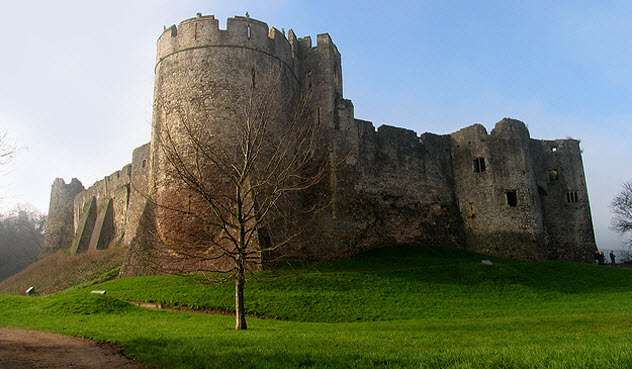
Although the rest of Sepultura’s Chaos A.D. was recorded in Rockfield Studios—a legendary recording studio in Monmouthshire, Wales—the instrumental song “Kaiowas” was recorded in Chepstow Castle. Located in Chepstow, Monmouthshire, construction on what would become Chepstow Castle began in 1067 or 1068, making the castle the oldest surviving post-Roman fortification in Great Britain. With such history, it’s not surprising that many consider Chepstow Castle a haunted edifice.
One of the more persistent ghosts in and around the castle is Henry Marten, who was held prisoner there by King Charles II in the 1660s. Marten, a parliamentarian and one of the men responsible for the execution of King Charles I, was held in the castle for 12 years but suffered relatively little during his internment.
Eyewitnesses have mostly heard what they believe to be Marten’s ghost as strange knockings are known to occur all over the castle. In addition to these noises, people have reported feeling cold spots in several different locations, while others have claimed that the smell of cooking onions can be detected in the castle’s gift shop. Previously, the gift shop was the the castle’s kitchen.
4 OK Computer
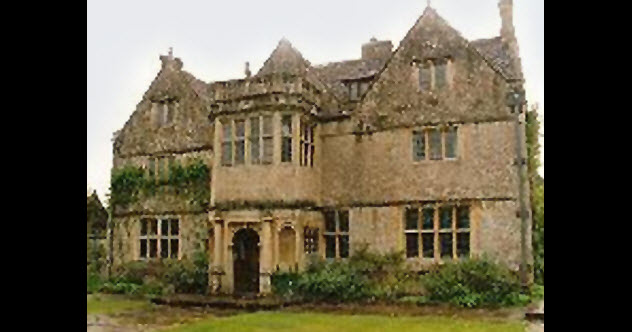
By 1996, Radiohead was already a critical darling. At that point, the Oxfordshire-based band was trying to write and record a follow-up to their well-received sophomore effort, The Bends. To do so, the band relocated to St. Catherine’s Court, a 15th-century mansion in Bath, England, that was owned at the time by famous actress Jane Seymour.
Not long after moving their equipment into the house, several band members began experiencing strange phenomena. According to lead singer and songwriter Thom Yorke, St. Catherine’s Court was haunted and the manor’s ghosts inspired him to write the song “Bodysnatchers,” which appears on the album In Rainbows.
Interestingly, St. Catherine’s Court wasn’t the first haunted house that Radiohead had used for recording purposes. Yorke also claimed that Tottenham Court House in Wiltshire, which the band used during the same recording process for OK Computer, was haunted as well.
In a 1998 interview with SPIN magazine, Yorke seemed to imply that the band chose St. Catherine’s Court because of its isolation and because it was believed to be haunted. While most rumors about St. Catherine’s Court begin and end with Radiohead (the band would record several more records there), Jane Seymour’s manor house is also well-known in Bath for being a public nuisance, with all-night parties frequently raising the ire of neighbors. In 2007, Seymour’s neighbors actually took her to court over all the mischief.
3 Exile On Main Street
The Rolling Stones were at the height of their debauchery in the early 1970s. The band spent more on drugs and booze than most bands spent on international tours. All of this caught up with them in 1971, however. In that year, the British government placed a punitive 93 percent tax on high earners. This forced Keith Richards to begin looking for non-British recording studios. For $2,500 a month, Richards and the rest of the band began living, partying, and sometimes recording at Villa Nellcote, a 16-room mansion on the French Riviera.
While making what would become Exile on Main Street, The Rolling Stones delved deep into debauchery at Villa Nellcote, with rampant drug use and sex. Although some of the more lurid stories are complete fabrications, the recording of Exile on Main Street, which was thoroughly documented by photographer Dominique Tarle, certainly came close to recreating the Satyricon in the 20th century.
Interestingly, Nellcote, which was built in the 1890s by a banker named Eugene Thomas, had previously been an old military base. During the German occupation of France, the villa served as an interrogation center used primarily by the Gestapo. It’s believed that the villa’s basement, where most of the songs on Exile on Main Street were rehearsed and recorded, was the location of the main interrogation cells.
2 Live At Napa State Mental Hospital
On June 13, 1978, The Cramps and The Mutants, two punk rock bands, invaded California’s Napa State Mental Hospital to play a live show. The concert, in all its madcap glory, was recorded for posterity. At best, the crowd consisted of 100 or 200 patients with a smattering of hospital staff and friends of the bands. Watching the video, which was secretly recorded with a Sony Portapak camera, it’s clear that the bands actively encouraged the patients to go wild.
Playing a raucous show at a mental hospital is strange enough, but The Cramps, who were from New York, and The Mutants, who were from nearby San Francisco, specifically chose Napa State because of its dangerous reputation. The hospital houses those deemed “criminally insane” and is the second largest institution of its kind in the United States.
In 2014, Dr. Stephen Seager, a psychiatrist at Napa State, penned Behind the Gates of Gomorrah, a tell-all account of the rampant violence that took place at the hospital. Without getting permission from Napa State authorities, Seager wrote the book to expose the truth that lurks behind the walls of America’s mental institutions. Chillingly, Napa State, which is home to numerous mass murderers, presents a rare opportunity to study the criminally insane in-depth and up close.
1 The Downward Spiral
Released in March 1994, The Downward Spiral remains one of the darkest albums ever recorded. Famous for the song “Closer” (and the song’s equally famous music video), this classic by Nine Inch Nails was recorded at a studio ominously called Le Pig. In truth, Le Pig was 10050 Cielo Drive in Los Angeles.
In 1969, 10050 Cielo Drive was the scene of a gruesome series of murders carried out by the disciples of Charles Manson. Sometime during the night of Friday, August 8, Manson Family members Charles “Tex” Watson, Susan Atkins, Patricia Krenwinkel, and Linda Kasabian arrived at the secluded house.
Inside, Watson, Atkins, and Krenwinkel found actress Sharon Tate (who was pregnant at the time), hairstylist Jay Sebring, coffee heiress Abigail Folger, and Wojciech Frykowski. They tortured, mutilated, stabbed, and shot all four individuals, plus they killed Steven Parent as the young man sat in his car outside.
Since these murders and especially since the well-publicized Manson Family trials that took place during the early 1970s, Charles Manson has become a counterculture icon to many. Some of this is mere outlaw chic, while a minority do find something appealing in Manson’s twisted ideology.
In particular, Manson’s frequent denunciations of “pigs” (a word Manson used to mean the political and social establishment of America) has been aped by several recording artists, from Marilyn Manson to Trent Reznor. Indeed, besides naming the former murder scene “Le Pig,” Reznor included the songs “March of the Pigs” and “Piggy” on The Downward Spiral. Two years earlier, Nine Inch Nails even recorded the music video for the song “Gave Up” at the infamous house.
Although Reznor claimed that he grew to hate Manson and the house after meeting Sharon Tate’s sister (who asked Reznor whether he was exploiting her sister’s death), Nine Inch Nails certainly made a handsome profit from The Downward Spiral.
Benjamin Welton is a freelance writer based in Boston. His work has appeared in The Weekly Standard, The Atlantic, Listverse, Metal Injection, and others. He currently blogs at http://www.literarytrebuchet.blogspot.com.
